CCAs 2025: The Return of the Overhead Projector to IFE?
Share
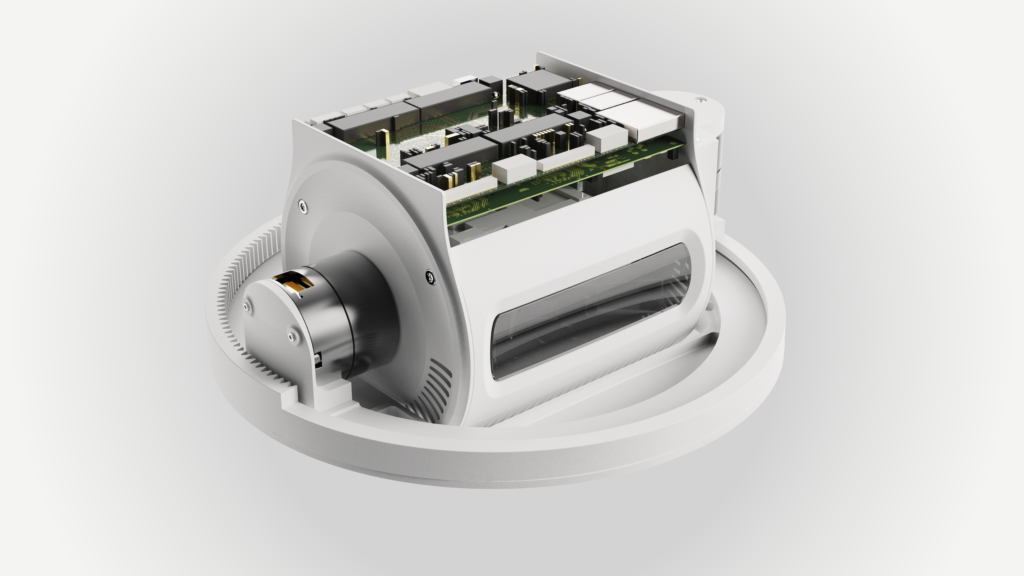
The first in-flight movie was shown over a century ago using an overhead projector. Of course, projector technology has evolved considerably since then – so much so that some believe it could hold the key to a dynamic and engaging in-flight entertainment (IFE) experience today.
In collaboration with Boeing, students Huiyi Huang and Xialu Chen from Tongji University have designed a new IFE experience dubbed the “Ultra-Lightweight Display System,” which is centered on miniature projectors and gesture recognition technology. The concept has recently been announced as a finalist in the 2025 Crystal Cabin Awards.
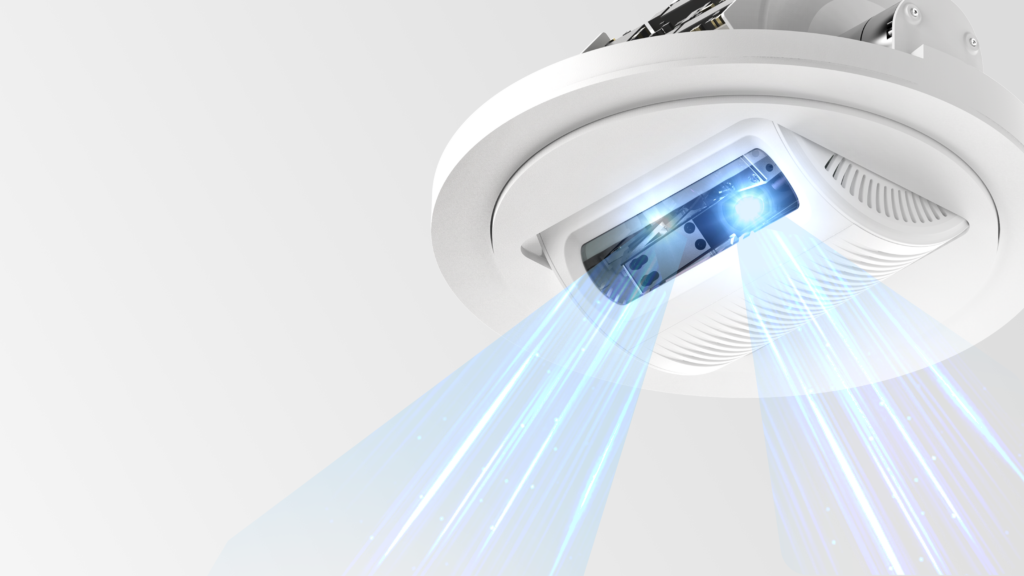
Rather than showcasing a communal film to the whole cabin like the early projectors used onboard, or indeed overhead IFE screens some time later, Huang said the Ultra-Lightweight Display System would instead use a “dual-optic module projector, which can cover the display area for three or four seats simultaneously.” In terms of accessing the content, it would connect with the onboard server in the same way as existing IFE systems do.
“Based on our simulated testing, our projector is capable of delivering clear visibility in both daylight and dim environments.”
The projector itself has cleverly been designed for “modular integration into the existing Passenger Service Unit (PSU), ensuring seamless compatibility with the aircraft’s original infrastructure,” explained Huang. “The device measures only 154×154×85mm and does not interfere with PSU core components such as oxygen masks and air nozzles.”
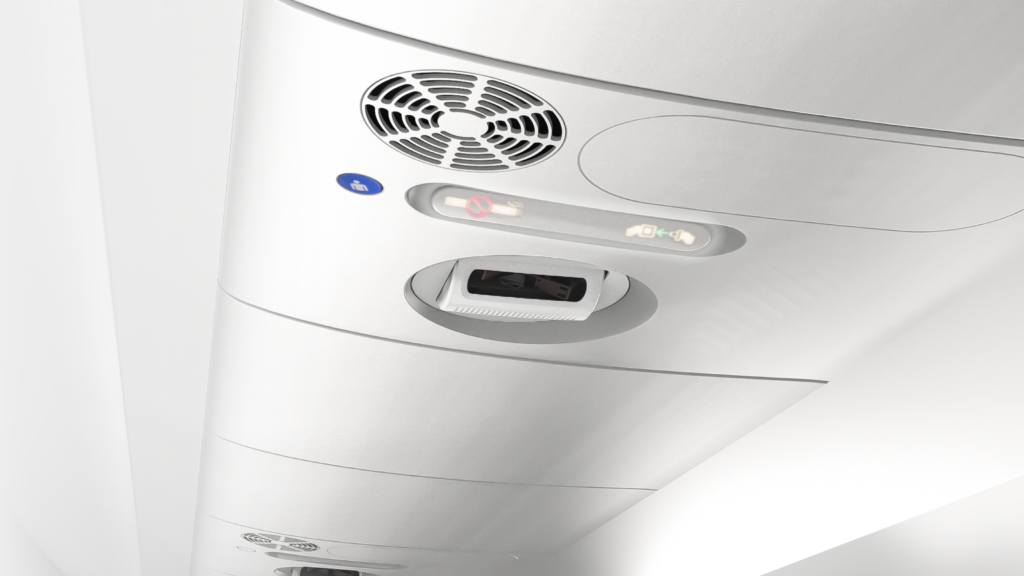
It is also much lighter than traditional IFE hardware. “Our whole prototype is approximately 0.5 kilograms per unit,” Huang said. “We conducted a theoretical weight reduction analysis, wherein a conventional seatback IFE system, including the screen and under-seat wiring box, weighs 1-3 kilograms per seat. That means for a Boeing 737-800, the total IFE system weight is 189-567 kilograms. By using our projection system, where one projector serves three seats, the total weight would be only 31.5kg, achieving a 83-94 percent weight reduction.”
As well as considering the airline’s bottom line regarding weight savings and drastically decreased maintenance, the duo have taken the passenger experience into account. APEX Media asked whether the projectors would work just as well during day-time flights as on a red-eye. Huang responded, “Under normal conditions, cabin ambient light levels typically range between 50 Lux and 300 Lux. Based on our simulated testing, our projector is capable of delivering clear visibility in both daylight and dim environments.
“Upon boarding, passengers can scan a QR code on their personal electronic devices to connect with the projection system.”
“The projector has an optimal view in a dim environment, but we optimized the design to ensure that even under bright conditions, the projected content remains visibly sharp and well-contrasted, providing passengers with a consistent viewing experience regardless of lighting,” she continued.
While first-class passengers might balk at the removal of a screen in favor of a projector, it seems like an interesting concept for low-cost airlines wanting to dynamically advertise to passengers without the installation costs of traditional IFE hardware, or those simply wanting to differentiate themselves in terms of entertainment provision.
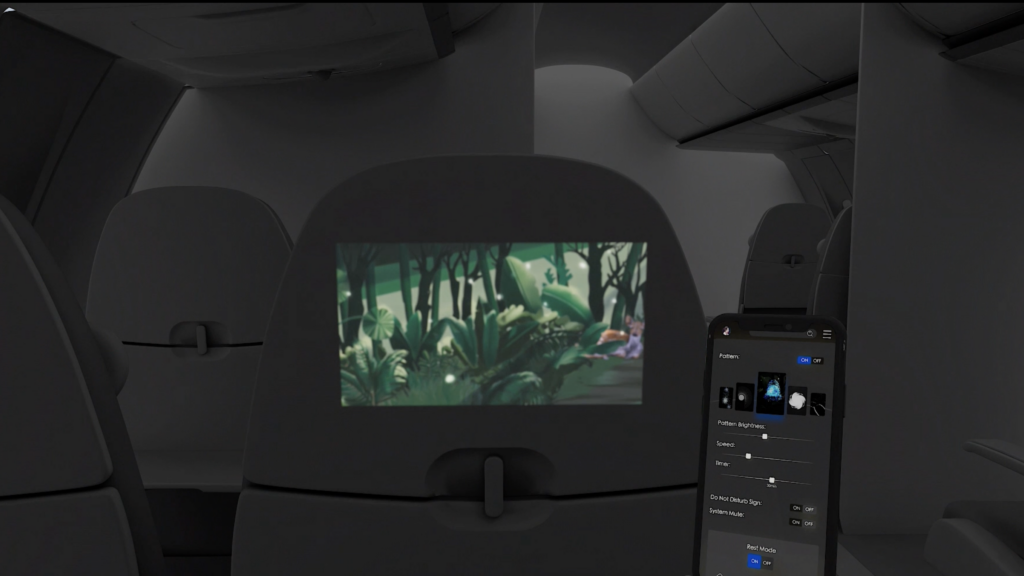
“We do believe that personal electronic devices (PEDs) and the projection system will work in synergy. With the increasing adoption of in-flight Wi-Fi, IFE systems are gradually evolving toward multi-screen interaction and interconnected experiences,” said Huang. “For example, upon boarding, passengers can scan a QR code on their personal electronic devices to connect with the projection system, enabling seamless device integration and content control. This allows passengers to use their PEDs to adjust projection content.”
“We conducted a theoretical weight reduction analysis […] for a Boeing 737-800 […] By using our projection system […] the total weight would […] achieve an 83-94 percent weight reduction.”
In theory, it could also be an add-on for full-service airlines, as in theory Huang believes the system can be projected onto any surface, be it a seatback, tray table, bulkhead or overhead bin. As the mock-up images show, it could be used to portray important information, ads or IFE content. “This solution can be customized according to the cabin layout and allows for flexible adjustments of projection angles and coverage areas to accommodate different spatial requirements,” Huang said.
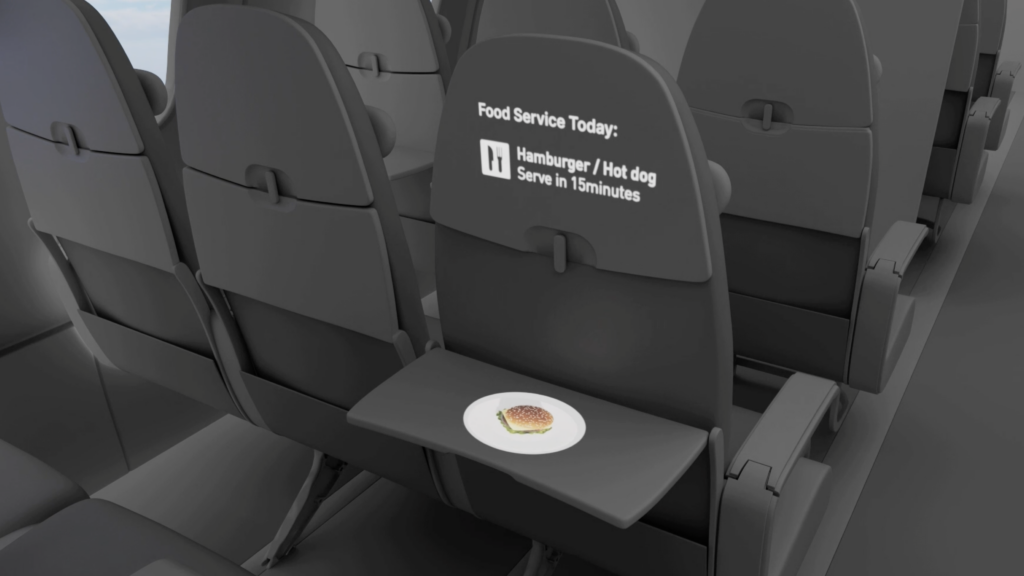
An IFE concept that is lightweight, with minimum parts and has a myriad of use cases is certainly one to be applauded, whether it ends up taking off or not.


